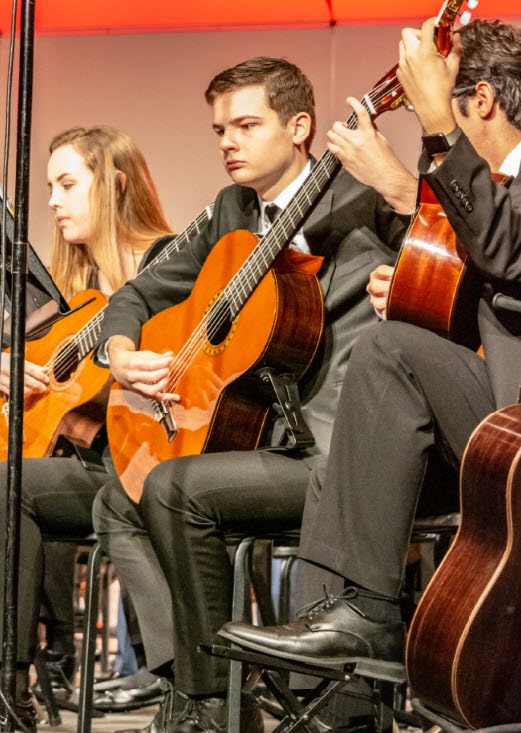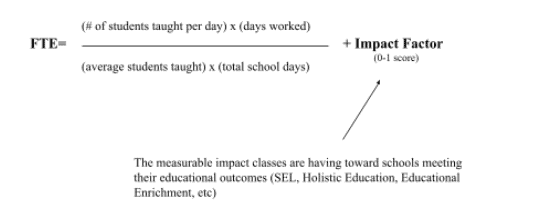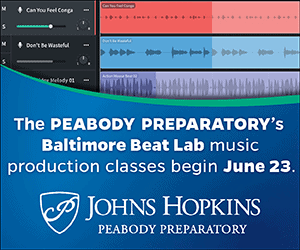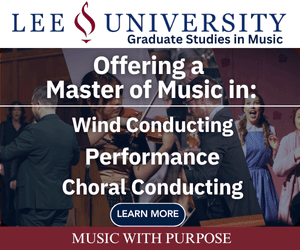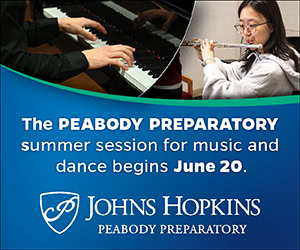/ News Posts / Full Time Equivalency and Its Place in a Post-Pandemic World
Full Time Equivalency and Its Place in a Post-Pandemic World
What Is FTE?
By NAfME Member William Brandt
Full Time Equivalency, or FTE as we know it, is a system employed in school districts across America. At its root, Full Time Equivalency reflects the total amount of work that a teacher does during the school day. This figure is calculated using the number of hours a teacher works, or how many classes they have, and dividing it by the possible hours in the school year. For example, in most states the standard school year is six hours per day and 180 days long. This means that a teacher who has a 1.0 FTE will be working all 6 hours per day for all 180 school days.
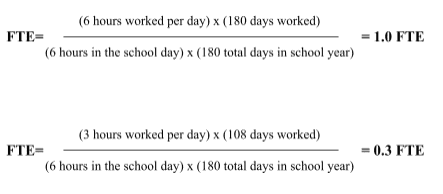
How Is FTE Different for Music Teachers?
The determination of how many hours a teacher will need to work is based on the number of class sections they teach/how many students they will have. This is where troubles can arise for “co-curricular” subjects such as music. While a math teacher might teach five sections of math throughout the day a music teacher might only have three ensembles. On paper this looks like the music teacher is doing less work, however the music teacher might have 60 students in each class whereas the math teacher might have 30; meaning both teachers teach the same number of students and have the same FTE.
However, one protection the math teacher has is that their course is required, whereas music is classified as a “co-curricular” subject, which means students are not required to take a music course. With the COVID pandemic last year, many students spent their last year doing music online, to much dismay. This inadequate representation of an ensemble experience has left many school districts reporting severe declines for student enrollment in musical ensembles. With music ensemble numbers waning due to the pandemic, administrators have been forced to tackle the issue of keeping teachers FTE stable. This raises a strange philosophical question as district administrations are having to decide how important music programs are to them. On one hand, if schools cut their music educator positions, they will save increasingly hard-to-find educational dollars. However, this puts teachers out of jobs and leaves music programs lacking support to regrow their numbers.
FTE Re-Imagined
Instead of looking at FTE as a system that purely gauges teachers’ class sections, it should start measuring the number of students a teacher has, and the impact that teacher is having on students reaching standards and goals.
Music education acts as a space that teaches students relationship skills, social competence, and self-awareness. These social-emotional rewards stand as the glue that brings together students’ educational experiences. Aren’t these the educational goals that students should be pushed toward, especially considering the last year of lacking developmental opportunities from online school? FTE should reflect an education system’s dedication to the future of students, both as academics as well as complete human beings, not the sum total of the students enrolled currently. An FTE system that better reflects these educational gains might look something like this:
FTE’s Role as an Advocate
For decades now studies have been pouring in stating the positive effects music education has on students. By recapitalizing Full Time Equivalency to align more with educational goals, “co-curriculars” are allowed to better advocate for themselves and the educational enrichment they offer students. In the end, music education has a large role to play in the rebuilding of school communities across the country, and school districts should remain dedicated to the cause of music education—to unite students through song.
About the author:
 NAfME member William (Billy) Brandt is a graduating senior from the University of Wisconsin-Oshkosh with an undergraduate degree in Music Education; certified PreK–12 Choral/General. Despite being a full-time student teacher, Brandt is very active in the field. He has served four years as an Instructor of Music Literacy and online content specialist for the Badger State Girl Choir under the direction of Dr. Kevin Meidl. Brandt also serves as the Director of Choirs for UCC-New London, serving with renowned handbell arranger Sandra Eithun, and has worked several times as a contractor for the Appleton Boy Choir.
NAfME member William (Billy) Brandt is a graduating senior from the University of Wisconsin-Oshkosh with an undergraduate degree in Music Education; certified PreK–12 Choral/General. Despite being a full-time student teacher, Brandt is very active in the field. He has served four years as an Instructor of Music Literacy and online content specialist for the Badger State Girl Choir under the direction of Dr. Kevin Meidl. Brandt also serves as the Director of Choirs for UCC-New London, serving with renowned handbell arranger Sandra Eithun, and has worked several times as a contractor for the Appleton Boy Choir.
Outside of his burgeoning teaching career, Brandt is also an avid writer within the field of music education. His first book entitled Let’s Talk: Music was published in the fall of 2021.
Interested in reprinting this article? Please review the reprint guidelines.
The National Association for Music Education (NAfME) provides are number of forums for the sharing of information and opinion, including blogs and postings on our website, articles and columns in our magazines and journals, and postings to our Amplify member portal. Unless specifically noted, the views expressed in these media do not necessarily represent the policy or views of the Association, its officers, or its employees.
October 28, 2021. © National Association for Music Education (NAfME.org)
Published Date
October 29, 2021
Category
- Certification/Licensure
- Preparation
Copyright
October 29, 2021. © National Association for Music Education (NAfME.org)

